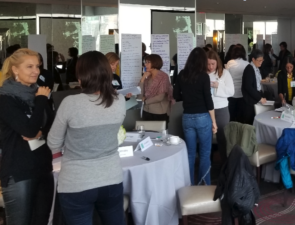Nirupa Umapathy is a diligent designer who isn’t afraid to take risks. In 2017, she committed to a year of unstructured play and rapid prototyping after leaving her career in finance. She focused on finding joy through travel and letting her curiosity lead her during “life reboot.” Since then, she has become a creative entrepreneur with a focus on facilitating change.
Here are tips from a veteran life designer on how to navigate the journey:
- Have the right resources in place. Before you launch into your odyssey plan, you need to be financially prepared and cultivate a supportive community. I was empowered to rapidly and boldly launch into my odyssey plans because I had a strong financial foundation and people I trusted to discuss my ideas with; that foundation was critical.
- Give yourself full permission to fail. Before I could embrace the design process, I had to give myself permission to fail. Over the last three years, I’ve experienced creative burnout and two failed business partnerships. I couldn’t have found my way through difficult times if I’d let these experiences define me as a failure. Instead, I reminded myself that they were part of the learning process.
- Group brainstorming uncovered what was important to me in ways I didn’t expect. Getting a fresh perspective and honest feedback also allowed me to let go of the mindsets I had adopted that were holding me back.
- Don’t trap yourself. Many people think that your career needs to be linear and singular. My ideal life looks like a pizza cut into three slices – writing, finance, and social entrepreneurship. Finding your balance takes time, curiosity and acceptance. For many, the hardest part of change is accepting that your work and life don’t have to fit a simple narrative.
- Make everything a prototype. Once you reframe each conversation and project as a data point to be gathered, you stop seeing outcomes as binary (i.e. success/fail). Instead, every experience is a data point that directs your path forward.
- Don’t be afraid to pivot. At one point, I had been doing a lot of grassroot-level work and realized that I wasn’t feeling fulfilled. It felt like I wasn’t applying my skills at a strategic level. I had to pivot to find a balance that worked for me. Design isn’t stagnant; make sure to pay attention to how you’re feeling and use that as feedback for your future designs.
- Stick with it. After practicing life design over the past four years, I can tell you that it is a journey, not a destination. It wasn’t always clear what your next step will be, but it’s up to you to take it.










